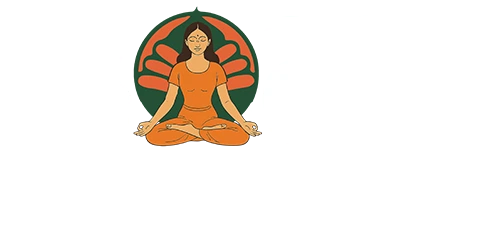Menopause is a natural biological process that marks the end of a woman's reproductive years. It typically occurs between the ages of 45 and 55 and is characterised by a decline in hormone production, particularly oestrogen and progesterone. While menopause is a normal transition, it can bring about a range of physical and emotional symptoms that affect quality of life.
Symptoms of Menopause
Common symptoms of menopause include hot flashes, night sweats, mood swings, fatigue, insomnia, vaginal dryness, and cognitive changes. These symptoms can vary in severity and duration, impacting women's daily activities and overall well-being.
Benefits of Yoga for Menopause
Yoga is an ancient practice originating from India that combines physical postures, breathing techniques, and meditation to promote holistic health and well-being. It offers a gentle yet powerful way to connect the body, mind, and spirit, providing numerous benefits for women going through menopause.
Hormonal balance
Yoga helps to regulate hormone levels in the body, including oestrogen and cortisol, which can alleviate menopausal symptoms such as hot flashes and mood swings.
Stress reduction
Practising yoga reduces stress and promotes relaxation through deep breathing and mindfulness techniques, easing anxiety and promoting emotional stability during menopause.
Improved sleep
Yoga promotes better sleep quality by calming the nervous system and reducing insomnia, a common complaint among menopausal women.
Best Yoga Poses for Menopause Management
Forward Fold (Uttanasana)
- Stand with feet hip-width apart and fold forward from the hips, allowing the upper body to relax over the legs.
- This pose stretches the spine, hamstrings, and calves, promoting relaxation and relieving tension in the body.
Bridge Pose (Setu Bandhasana)
- Lie on your back with knees bent and feet hip-width apart, arms by your sides.
- Lift your hips towards the ceiling while pressing into your feet and engaging the glutes and core muscles.
- This pose strengthens the back, chest, and thighs, improving posture and alleviating back pain associated with menopause.
Child's Pose (Balasana)
- Kneel on the floor with toes together and knees apart, sitting back on your heels.
- Fold forward, reaching your arms out in front of you and resting your forehead on the mat.
- This gentle resting pose stretches the spine, hips, and thighs, calming the mind and relieving stress.
Legs-Up-the-Wall Pose (Viparita Karani)
- Sit with your side against a wall and swing your legs up the wall, lying on your back.
- Relax your arms by your sides and close your eyes, breathing deeply into your belly.
- This inversion pose promotes circulation, reduces swelling in the legs, and calms the nervous system.
Supported Reclining Bound Angle Pose (Supta Baddha Konasana)
- Lie on your back with knees bent and feet together, placing blocks or bolsters under your knees for support.
- Allow your knees to fall open to the sides, resting the soles of your feet together.
- This supported reclining pose opens the hips and chest, relieves fatigue, and promotes relaxation.
Yoga Breathing Techniques for Menopause Relief
Deep breathing exercises like Alternate Nostril Breathing (Nadi Shodhana) and Three-Part Breath (Dirga Pranayama) can help to calm the nervous system, reduce stress, and balance hormone levels during menopause.
Creating a Yoga Practice for Menopause
To create a personalised yoga practice for menopause, incorporate a combination of gentle stretching, strengthening, and relaxation poses, along with breathing techniques and meditation. Listen to your body's needs and modify poses as necessary to accommodate any physical limitations or discomfort.
Tips for Practising Yoga During Menopause
- Practice yoga regularly, aiming for at least 20-30 minutes a day, several times a week.
- Choose a comfortable and quiet space for your practice, free from distractions and interruptions.
- Wear loose, breathable clothing and use props like blankets, blocks, and bolsters for support and comfort.
- Stay hydrated and listen to your body, taking breaks as needed and honouring any sensations or limitations that arise.
Precautions and Considerations
While yoga can be beneficial for managing menopause symptoms, it's essential to practise with caution and listen to your body's cues. Avoid overexertion or pushing yourself too hard, especially if you're experiencing fatigue or joint pain. If you have any underlying health conditions or concerns, consult with your healthcare provider before starting a new exercise regimen.
Consulting a Yoga Instructor
If you're new to yoga or unsure where to begin, consider seeking guidance from a certified yoga instructor who specialises in women's health or menopause. They can provide personalised instruction, offer modifications for your individual needs, and ensure that you practise safely and effectively.
Conclusion
In essence, yoga offers a natural and holistic approach to managing menopause symptoms, providing relief from hot flashes, mood swings, insomnia, and other common complaints.
With regular practice and mindful awareness, yoga becomes a powerful tool for navigating the challenges of menopause with grace and resilience.
FAQs
1. Can yoga help with severe menopause symptoms like hot flashes and night sweats?
Yes, yoga can be effective in reducing the frequency and intensity of hot flashes and night sweats by balancing hormone levels and promoting relaxation.
2. I've never practised yoga before. Is it too late to start during menopause?
It's never too late to start practising yoga! Beginners of all ages can benefit from yoga's gentle and adaptable approach, regardless of their level of experience.
3. How long does it take to see results from yoga for menopause relief?
The timeline for seeing results can vary depending on the individual and the consistency of practice. Some women may experience improvements in symptoms within a few weeks, while others may require several months of regular practice to notice significant changes.
4. Are there specific yoga poses to avoid during menopause?
While most yoga poses are safe and beneficial during menopause, it's essential to avoid poses that strain the joints or exacerbate any existing health conditions. Listen to your body and modify poses as needed to ensure comfort and safety.
5. Can I practise yoga during menopause if I have osteoporosis or other bone health issues?
Yes, yoga can be adapted to accommodate various health conditions, including osteoporosis. However, it's essential to work with a knowledgeable yoga instructor who can provide appropriate modifications and guidance to ensure safety and effectiveness.






